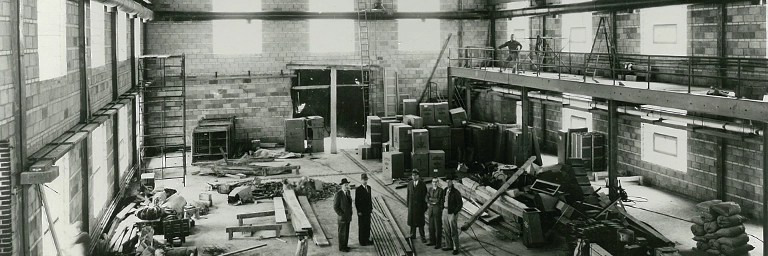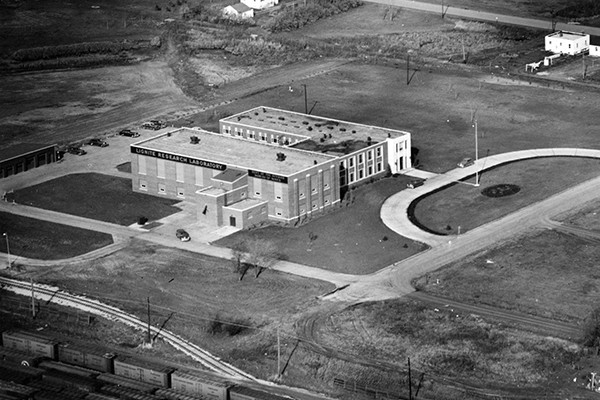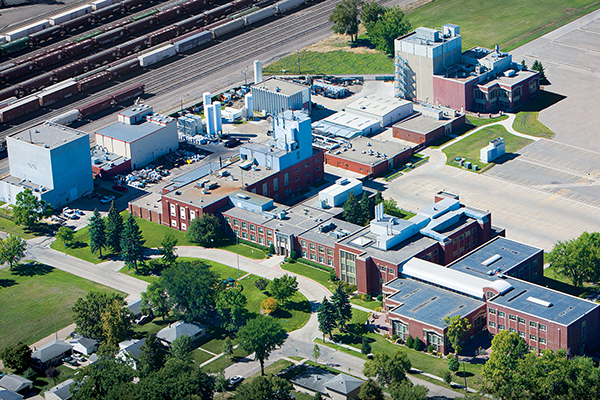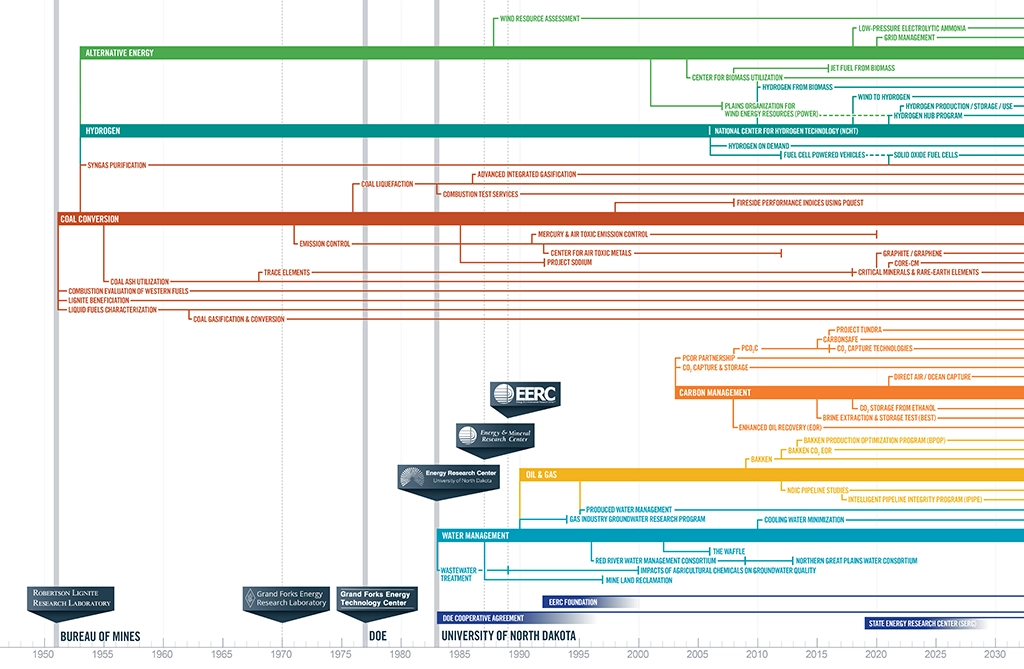
Our History

A cornerstone of the EERC’s success is its rich history.
The EERC was officially founded in 1951 as the Robertson Lignite Research Laboratory, a federal facility under the U.S. Bureau of Mines. However, the EERC’s roots date back to the 1890s when Earl Babcock, a chemistry professor at the University of North Dakota (UND), began studying the state’s vast lignite coal resources and investigating potential uses for them.
The work of Babcock and others at UND led to the establishment of the Bureau of Mines laboratory on the university campus in 1951. In 1977, the facility became a federal energy technology center under the U.S. Department of Energy (DOE). In 1983, the center was defederalized and became part of UND.

1951–Present
Over 70 Years of Growth
In 1947, Representative Charles Robertson introduced a bill to establish a national Lignite Research Laboratory in Grand Forks with an appropriation of $750,000 for construction, and by 1951, a Bureau of Mines laboratory opened on campus.

The original building is still used today, with expanded facilities to include seven different laboratory spaces, multiple pilot-scale demonstration facilities, and four office floors.
Under the U.S. Bureau of Mines in the 1950's, the EERC's early research was focused primarily on unlocking the energy secrets of lignite. The EERC eventually expanded its research to the environmental impacts of burning coal. Research focused on lignite ash, byproducts, and pollution prevention technologies in the 1960's and 1970's.
By the 1980's, the center was defederalized and a new era of energy research began. The EERC started investigating water management and coal liquefaction, the process of turning coal into liquid fuels and petrochemicals. By the 1990's, the EERC was involved in mercury and air toxic emission control, as well as several oil and gas industry projects.
The EERC expanded its research in the early 2000's to include carbon capture, utilization, and storage (CCUS); enhanced oil recovery; and renewable and alternative fuels.
Today, the EERC stands as a leader among energy and environmental research in coal utilization and emissions, CCUS, oil and gas, water management, and alternative and renewable energy.

The EERC's research has expanded over more than 70 Years.
